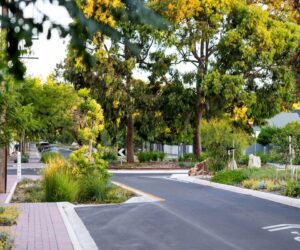Dirt Cheap: Swinburne Researchers 3D-Print with Earth to Rethink Housing
Swinburne University of Technology researchers are developing cutting-edge 3D printing technology that could help tackle Australia’s housing crisis by building homes from earth, plant fibres and other natural materials.
Led by Dr Mohamed Gomaa from Swinburne’s School of Engineering, the team is pioneering a novel 3D printing system that allows natural fibrous-earth mixtures to be printed in higher-density with precision. The approach is designed to make walls stronger, more durable and more environmentally friendly, while dramatically cutting the cost and time needed to build.
“Earth is one of the oldest and most sustainable building materials we have,” says Dr Gomaa.
“It’s abundant, recyclable and has almost no carbon footprint. By combining it with plant-based fibres and advanced robotics, we’re reimagining indigenous building knowledge for a modern, digital era.”
The innovative system could help deliver affordable housing faster, particularly in remote or disadvantaged communities where access to conventional construction materials and labour can be limited. Using mostly local earth and fibres, 3D printed homes could be produced at a fraction of the cost and up to 60 per cent faster than conventional builds.
“With Australia expected to face a shortage of more than 600,000 social and affordable homes by 2036, we urgently need new solutions,” Dr Gomaa explains.
“3D printing with earth offers a way to build faster, cheaper and with materials that are literally beneath our feet.”
Unlike concrete, which accounts for around eight per cent of global CO2 emissions, earthen construction has a near-zero carbon footprint. The Swinburne team’s process strengthens earth-based materials by adding natural fibres sourced from agricultural by-products such as hemp and rice husks, transforming waste into a valuable resource.
“This approach not only improves the strength and resilience of the printed walls, but it also supports a circular economy by turning farming waste into something that can shelter families. It’s sustainable on every level – environmental, social and economic.”
The research brings together Swinburne, industry partner Luyten 3D, UNSW, and Indigenous knowledge holders, who are contributing insights from ancient earth-building traditions. The team has already printed and tested small-scale prototypes and is now working towards a larger demonstration build in Victoria, which will showcase the technology’s real-world potential.
“What excites me most is seeing modern robotics breathe new life into ancient, sustainable materials,” says Dr Gomaa.
“Where I grew up, people lived comfortably in earth houses that had stood for centuries. Now, through 3D printing, we have the opportunity to take that same wisdom and make it part of the solution to today’s housing challenges.”
This innovation has the potential to transform how homes are built in Australia, delivering affordable, low-carbon housing that is both technologically advanced and deeply connected to culture and place.
This project is supported through the Australian Research Council Linkage Projects Scheme.
More information: swinburne.edu.au



